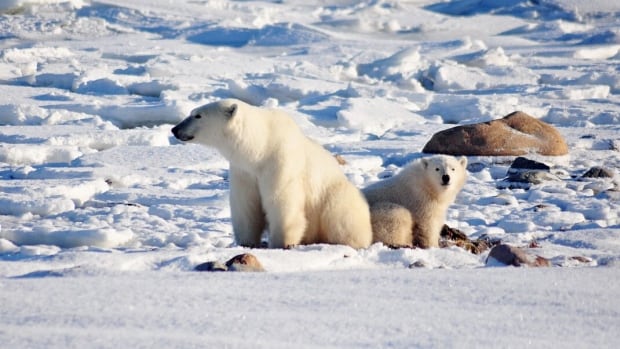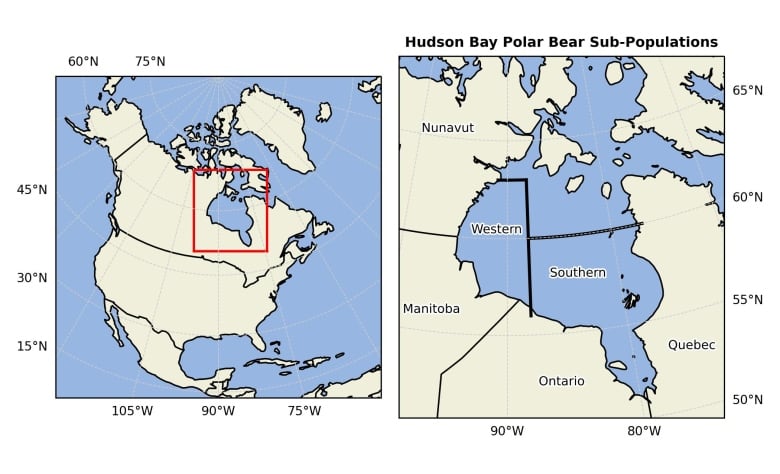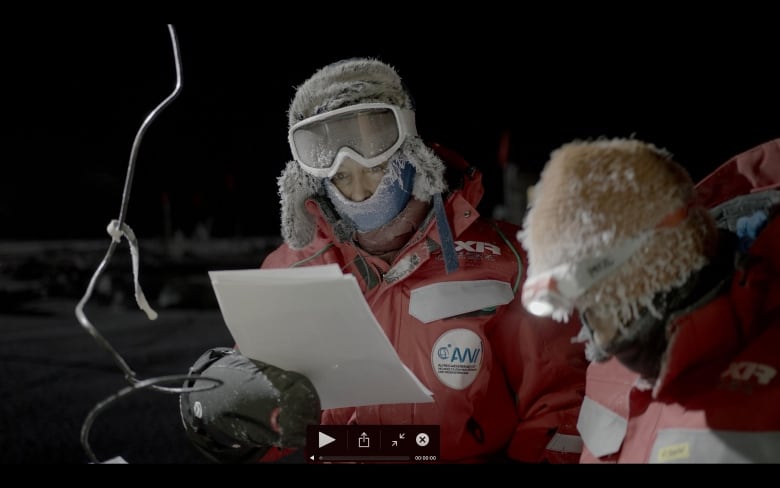
Two subpopulations of polar bear in Hudson Bay will disappear in the next few decades if the world isn’t able to cap global warming at 2 C, according to a new multi-disciplinary study.
The report, published in the journal Nature, Communications Earth and Environment on Thursday, looks at various scenarios of warming and what it would do to sea ice, seals, and polar bears.
Julienne Stroeve, a professor at the University of Manitoba and the report’s lead author, said with more than two degrees of warming above pre-industrial levels, both the southern and western populations of the Hudson Bay polar bear will become extirpated. That means they’d be extinct locally.
The study concludes that’s expected to happen sometime between the 2030s and 2060s.

“I think we need to start telling people, sadly, the harsh realities of what’s to come if we don’t do anything,” said Stroeve. “It’s going to transform the entire Arctic region beyond contemporary recognition.”
Up To Speed7:13How bad would global warming have to get for Polar Bears to go extinct in Manitoba?
Polar Bears in the Hudson Bay could be extinct as early as the 2030s — that’s according to a new study lead by U of M researchers. Host Faith Fundal chats with one of the researchers behind a shocking new report.
Elder says polar bears not as fat as they used to be
David Kuptana, an elder from Ulukhaktok, N.W.T. who shares his home with different polar bears, said this past hunting season was “really good.”
The N.W.T. is home to the Southern Beaufort Sea, Northern Beaufort Sea and Viscount Melville Sound polar bear subpopulations. A limited number of tags to hunt from each subpopulation are given out each year.
Kuptana said his family brought in a number of bears of a good size — a sign, he says, that the population living in his region is doing well. But he has noticed some things that cause him to worry.

For example, their stomachs are nearly empty.
“The bears we used to catch long ago used to be very healthy, very fat,” he said. Now, they don’t have as much fat. He’s worried the open water around his Arctic home is making it hard for them to hunt.
“If they can’t find food, they will keep breaking into cabins and looking for something to eat or coming into town,” he said.
Kuptana said he also didn’t see any polars bears with cubs this year, though he did spot their tracks.
Geoff York, the senior director of research and policy at Polar Bears International, said polar bears are showing up on shore more often because of changes happening out on the sea ice.
“That can definitely give the impression that there are more bears in general, and without question, there are more bears around communities in some cases,” he said.
Stroeve said some subpopulations of polar bear may be able to migrate to areas where thick ice may last longer — the Canadian Arctic Archipelago, north of Ellesmere Island, is expected to be one of the those places — but the bears in Hudson Bay don’t have that option.
“There’s really not any place for those bears to go, in part because the way that the sea ice drifts with the winds,” she said.
Climate change brings too long a fasting period, study says
Sea ice is integral to a polar bear’s life — it’s where they hunt, breed, and raise their young. Stroeve’s study looks at how long Hudson Bay will be ice-free in the summer, and whether polar bears will be able to survive the summer fasting period, which is particularly challenging for nursing mothers.

During that time, polar bears move to land. Though they may find food there, scientists say it doesn’t contain enough energy for them to maintain their bodies.
York pointed to a recent study which found the energy polar bears derive from food found on land is barely offset by the energy they expend trying to find it.
Even at 1.6 degrees of warming — which the world is currently teetering on the brink of — Stroeve found that the southern Hudson Bay polar bears may not survive.
Under two degrees of warming, ice free periods in that region are expected to last between 174 to 182 days. Stroeve said most ecologists think polar bears would not be able to survive a fasting period longer than 180 to 200 days long.
The bears in the western region of the bay have a bit more time, because freeze up happens there earlier, she said. Even so, under two degrees of warming, their ice-free period will be 163 to 168 days long.
Accounting for all pledges countries have made to reduce emissions, Stroeve said the planet is still headed for 2.7 degrees of warming by the end of the century. If that happens, she said, there will certainly be no polar bears left in Hudson Bay.
“There’s a general sadness that comes along with that,” said York.
“The things we need to be doing as societies to help turn this around, reducing greenhouse gas emissions just aren’t keeping up with the realities on the ground. We’re not doing enough quickly enough.”